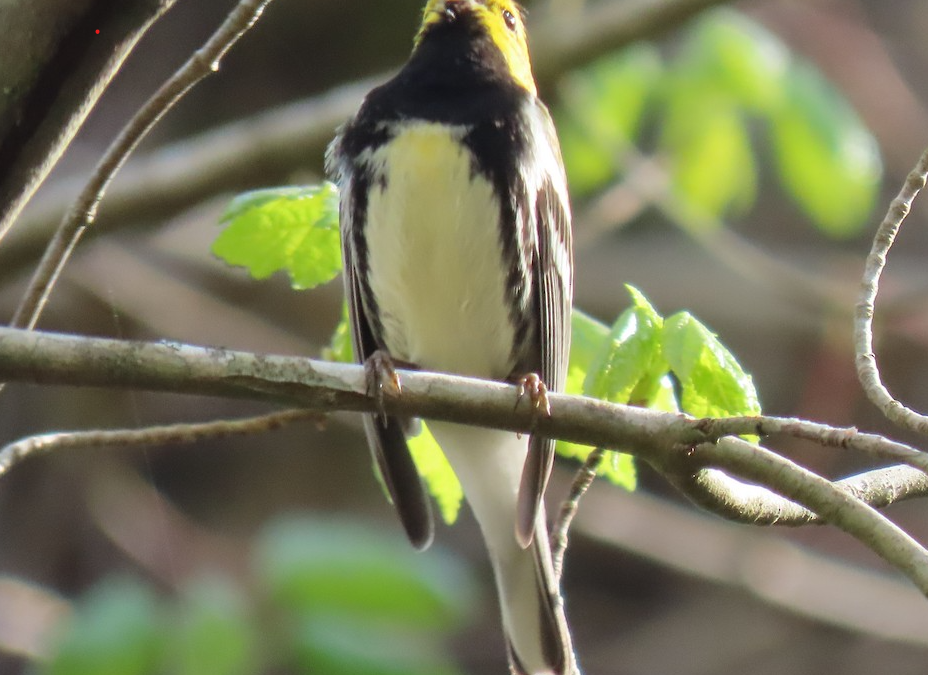Where Wayne’s Warblers Dwell

Become an OspreyWatcher – It’s fun and easy
March 30, 2024
Adult turnover spikes in Virginia peregrines raising alarms about the potential impact of avian flu
July 18, 2024By: Chance Hines
4/2/24
The Great Dismal Swamp is one of the largest intact wetland ecosystems in the eastern United States and the expansive wilderness creates a sense of isolation and mystery while offering sanctuary to a rich array of flora and fauna.
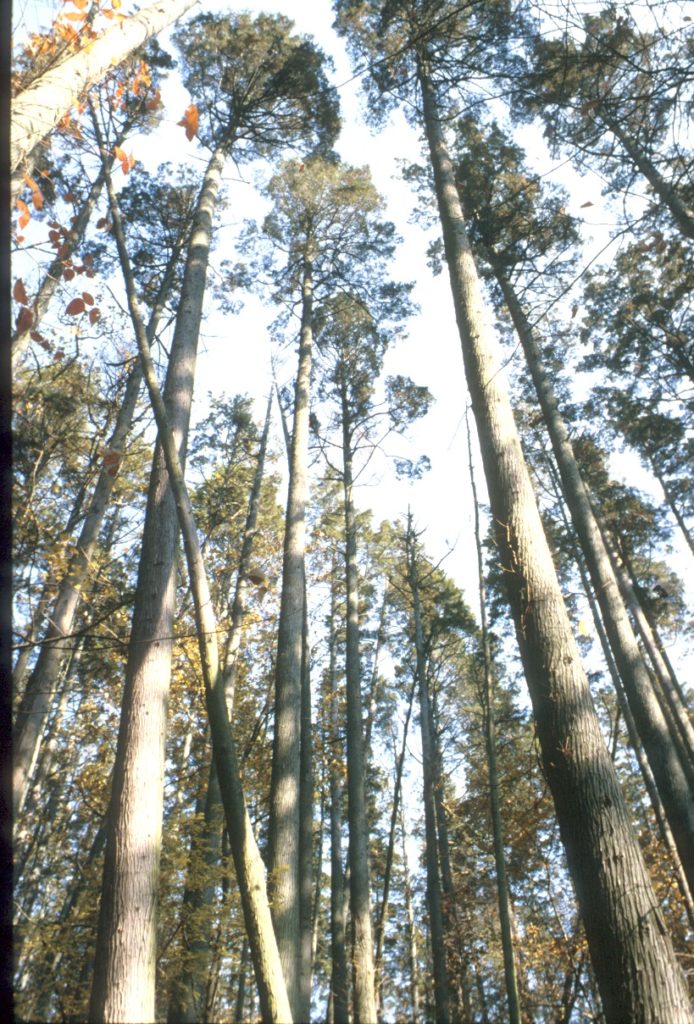
Among the avian inhabitants of this vast wilderness is the Wayne’s Black-throated Green Warbler, a genetically distinct subspecies that finds its breeding grounds along a narrow strip of the mid-Atlantic coastal plain. Compared to its nominate cousins, which inhabit the Appalachians and higher latitudes of North America, Wayne’s Warblers are notably smaller and arrive at their breeding grounds much earlier in the season.
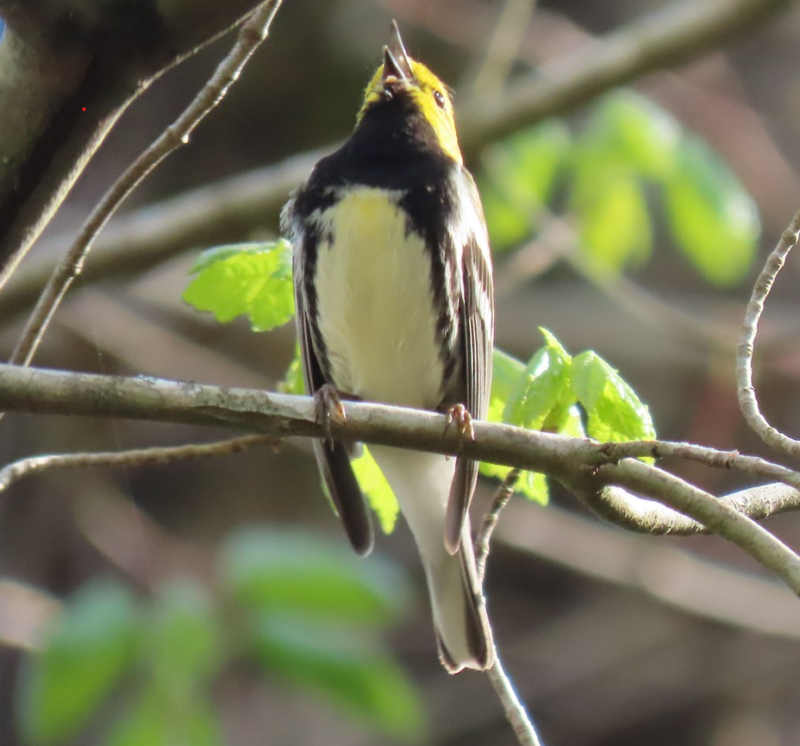
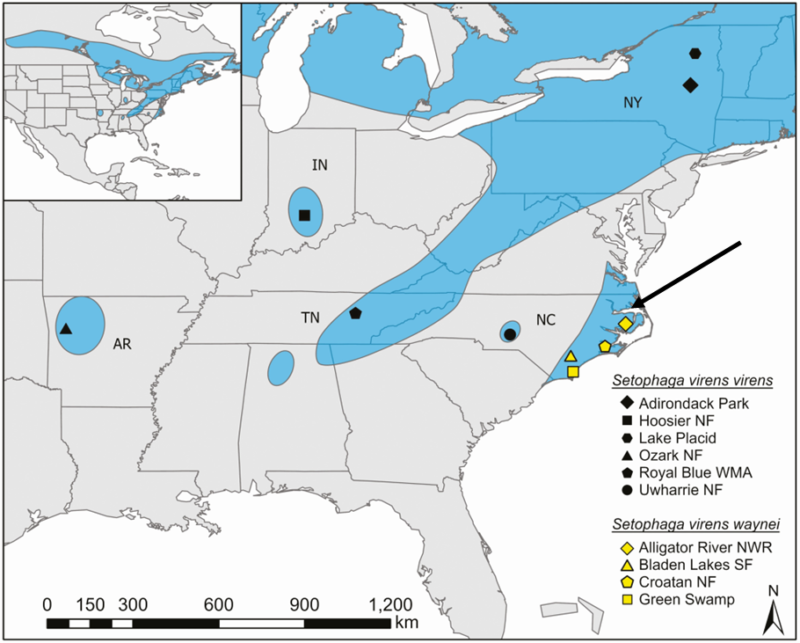
Once a common breeding songbird within the Great Dismal Swamp, the current distribution of the Wayne’s Warbler within the swamp remains uncertain. Surveys conducted by the Center for Conservation Biology (CCB) in the early 2000s indicated a decline in population since the mid-20th century, reflecting broader trends across their range. As a response, efforts are underway to petition for the listing of the subspecies under the U.S. Fish and Wildlife Service’s endangered species list, garnering support from state, federal, and non-profit biologists spanning their range from Charleston, South Carolina, to southeastern Virginia.
Currently, CCB and the Virginia Department of Wildlife Resources are collaborating to assess the distribution of Wayne’s Warbler within the swamp and nearby potential habitats. The subspecies’ early breeding onset poses challenges to accurately determining its distribution and occupancy, particularly as it coincides with the migration period of nominate Black-throated Green Warblers. To address this, survey efforts focus on the weeks preceding and following the peak of spring migration.
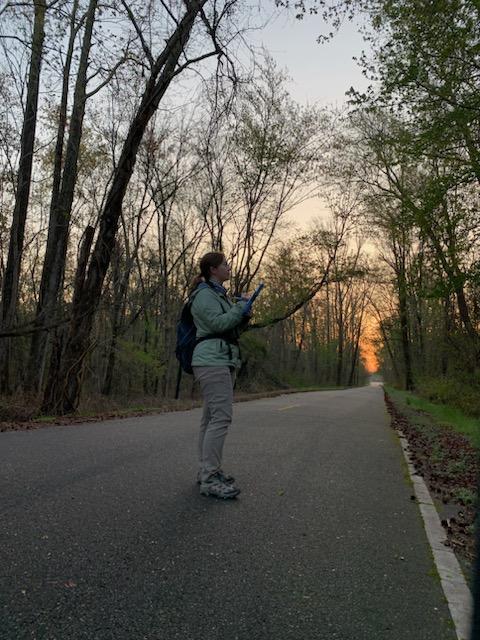
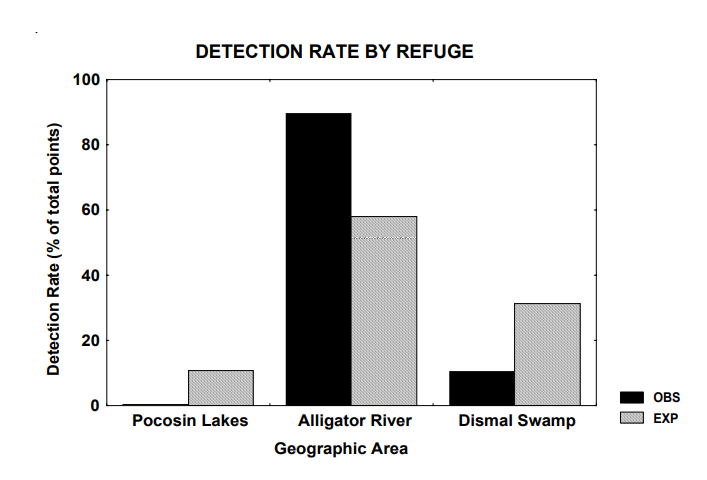
Initial findings from early-season surveys have been promising. Beginning on March 19th, four Wayne’s Warblers were observed on the first route of the season, with subsequent surveys yielding up to 10 individuals along a single survey route. These observations offer optimism for the subspecies’ population within the swamp, and CCB aims to locate nests and monitor breeding success in the coming weeks.

